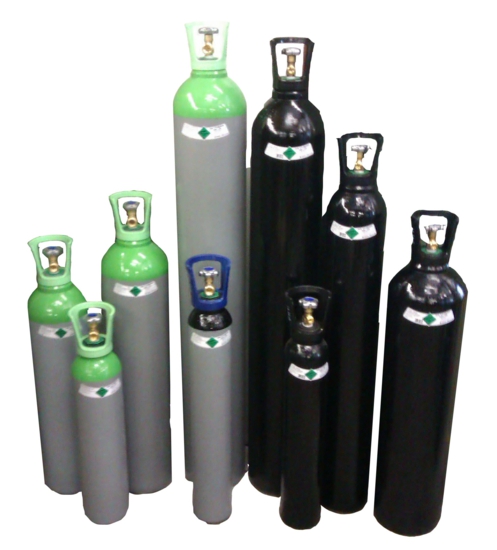Gas cylinders are used because they are a convenient way to transport and store gases under pressure. Gas cylinders are used every day for a range of purposes including water treatment, extinguishing fires, oxygen, medical and laboratory use, vehicle fuels, heating and cooking.
Gas cylinders, however, are dangerous and a hazard in themselves if they are not properly handled, transported, regulated and stored. There are strict guidelines surrounding all of these factors when handling and storing gas cylinders as they can cause a number of accidents and risks.
The main causes of accidents are inadequate training and supervision, poor maintenance, handling and storage, faulty equipment and hidden damage to cylinders and poorly ventilated working conditions where gas bottles are used. Damage to cylinders includes dents, faulty valves and bulges.

Gas bottles can explode with a rapid release of compressed gas, and also valves on gas bottles can fail or become damaged or faulty. Flammable gases and fluids can also cause fire if it escapes from the cylinder. Some gases and fluids will also cause burns and injury if employees come into contact with them. Other risks also come from cylinders that fall and from injuries when handling.
There are many ways that employers and organisations can minimise these risks.
Examination
Always examine thoroughly every gas bottle that comes onto the premises. Gas cylinders must be designed and manufactured to an approved standard under relevant legislation. Gas cylinders should also be examined by an appropriate inspection body to verify that they are manufactured correctly and meet the appropriate design standards.
Gas cylinders should also be issued with a written certificate to say that they have examined by the appropriate inspection body or have a stamp of approval on the gas cylinder itself.
To ensure that cylinders are safe for continued use they will need to be examined at set intervals that are specified within regulations and the law. All of the cylinders should show the date of the last periodic examination so a record is kept.
Adequate Training
Any employee that examines, uses, fills or handles a gas cylinder should be given training and have the skills to carry out their job in safety. It is also important that only specially trained and qualified personnel remove cylinder valves as this is highly risky. All new employees who handle cylinders should be given training as soon as possible.
Storage
It is important that gas cylinders should not be stored for excessive periods of time and stocks should be rotated so that the oldest is used first.
They should also be stored in a dry, safe place on a flat surface with plenty of ventilation and away from water. Cylinders should be locked away in a gas bottle storage facility or secure mesh cages that are especially designed to store them securely and safely.
They should also be stored away from hazards in the workplace that could potentially damage them such as moving equipment and vehicles.
Protective Clothing
Protective clothing should be used for employees who fill gas cylinders. Protective clothing such as goggles, ear protection, safety shoes and gloves should be worn to minimise risk of injury.
Sonya writes for idh direct, a leading provider of secure gas cylinder storage and gas cages. Go to: http://www.idhdirect.co.uk for further information.










Comments